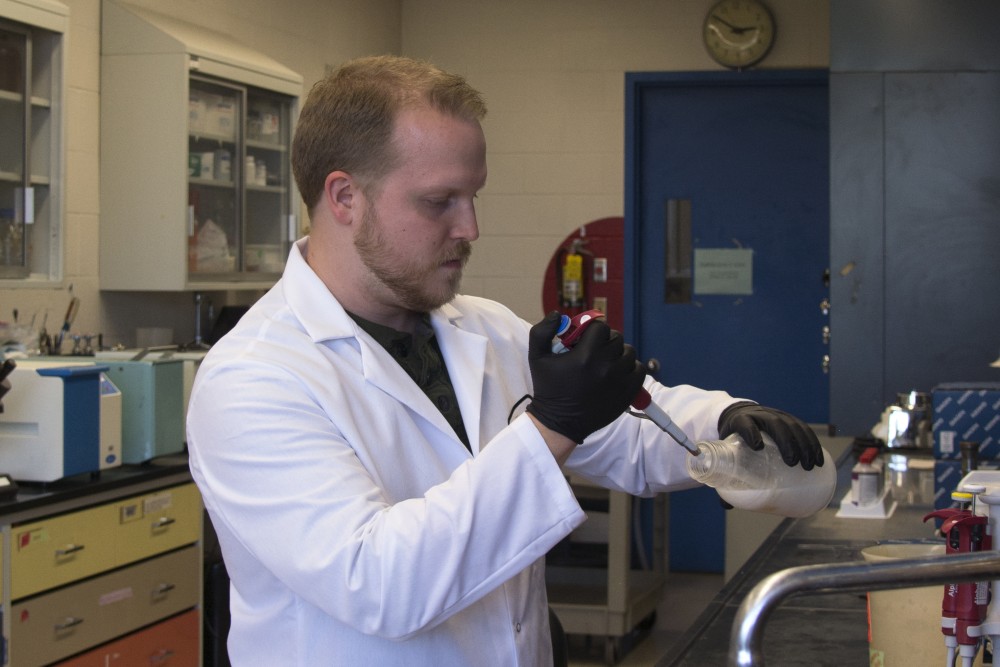After making it to the finals of a national research competition, a University of Minnesota graduate student is searching for funding for an innovative agricultural project.
College of Food, Agriculture and Natural Sciences student Andrew Carter’s proposal to synthesize dairy in a lab using cellular agriculture was one of 45 finalists in National Geographic’s 2017 Chasing Genius contest, which sought strategies for feeding the world’s growing population. While Carter didn’t win, he’s still searching for ways to move forward with his “futuristic” dairy production idea.
“The problem is that so few groups in the country are doing this that I’m just trying to start myself inside this University,” Carter said.
Over 2,800 ideas were submitted in the inaugural Chasing Genius competition this year. The contest focused on global health and sustainable agriculture.
“Chasing Genius is, in a sense, a global challenge to find innovative solutions that address some of the world’s most critical issues,” said Dea Radovancevic, a National Geographic representative, in an email to the Minnesota Daily.
Carter’s proposed research would use microbes to create products similar to dairy that could be used as a flavor additive or supplement in other products. For example, this research could make it easier to add nutritious omega-3 fatty acids to milk fat, he said.
This would involve placing microbes in a bioreactor, allowing them to grow and then extracting the products that can be turned into a substance similar to dairy, he said.
While Carter’s idea did not win the competition, he’s still searching for funding, which he says can be difficult because cellular agriculture is at the intersection of three separate fields: bioproducts, medicine and food science.
“There are very few [grant] opportunities that cover all three aspects,” he said.
Plus, cellular agriculture — which uses cellular cultures in agriculture to improve sustainability in food cultivation — is an emerging field, which makes funding even harder to come by.
Cellular agriculture could be more cost-effective than traditional agricultural production, as microbes require less care than livestock, Carter said.
It could also offer health benefits. There’s less risk of contaminating foods with harmful bacteria in a lab, he said.
“If you have a controlled environment, it’s less likely that pathogens like salmonella, listeria, E. coli will be introduced into the product,” he said.
Cellular agriculture offers environmental benefits over traditional food production as well, Carter said, since it doesn’t produce chemical and fertilizer runoff commonly associated with conventional dairy production.
Sustainability — which involves a farming community’s quality of life, environmental impact and farm profitability — is a major concern within the agriculture industry, said Jane Jewett, information exchange program associate with the Minnesota Institute for Sustainable Agriculture.
Many dairy farmers lose money because of rapidly-changing dairy prices, which often don’t cover the cost of production, Jewett said. Dairy prices are falling further due to increasing production, she said.
In light of these growing issues, the dairy industry should be searching for more sustainable production methods, Jewett said, but progress within the industry has been largely stagnant.
Carter hopes ideas like his will be viable alternatives to conventional production in the future.
“This kind of work is five decades too early. It’s not at the forefront, and it should be,” he said. “By the end of the century, cellular agriculture will be a major component of the food supply.”








